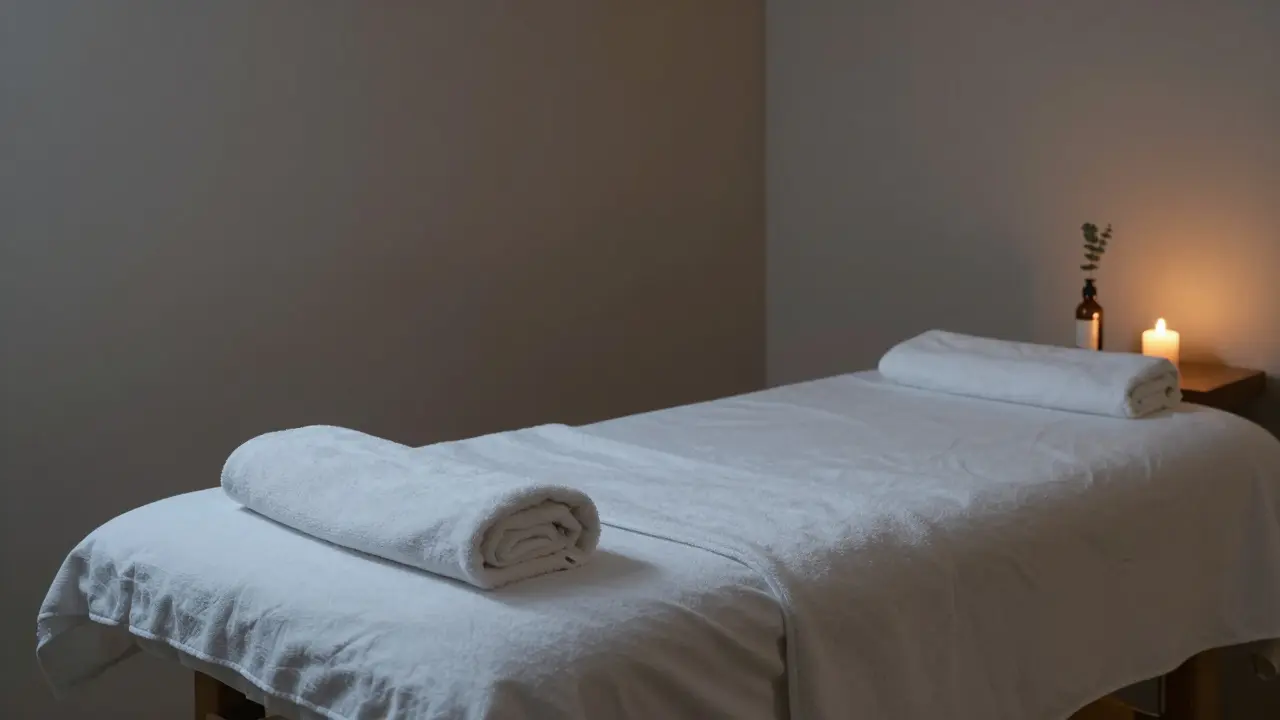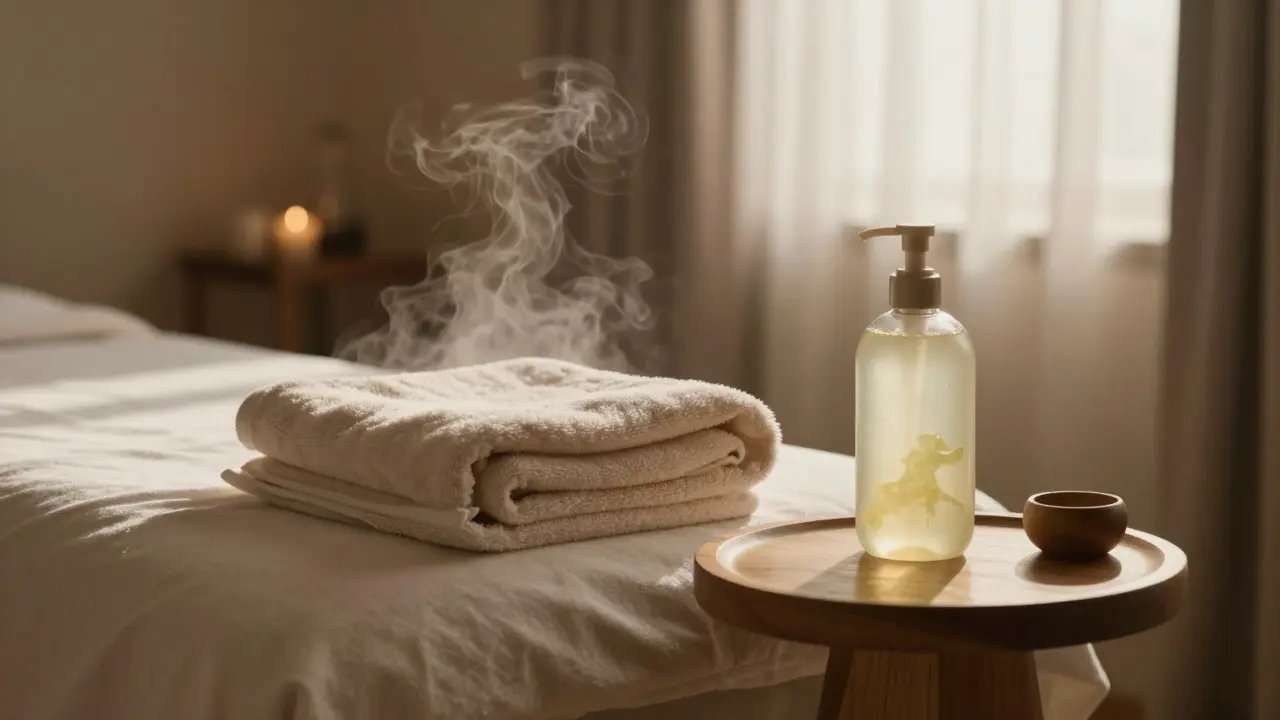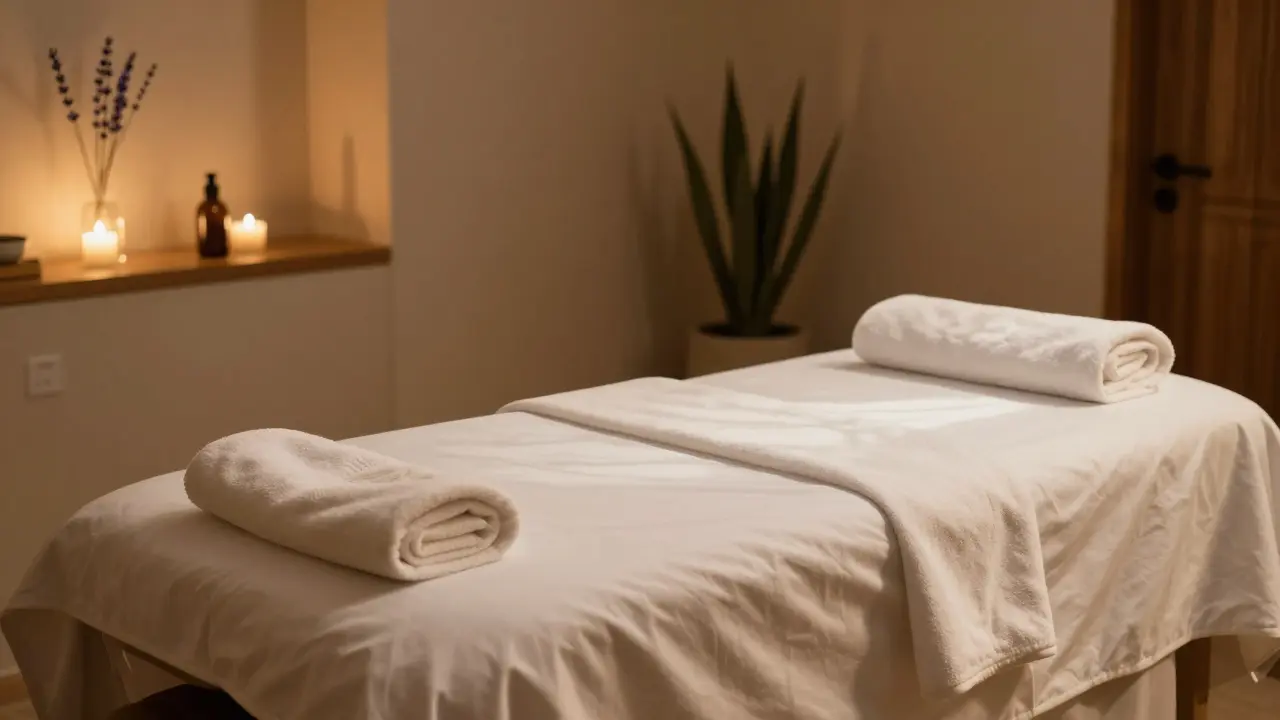Picture this: You just finished an amazing 90-minute massage, your muscles are as loose as spaghetti, stress is melting away, and you’re basking in that spa glow. Now comes the part nobody talks about nearly enough—tipping. How much should you tip your massage therapist after a longer session like this? Is $20 a good tip for a 90 minute massage, or is it too much? Not enough? Let’s break it down in a way that’ll save you from any awkward spa exit scenes and help you feel confident about your next pampering session.
Is $20 a Good Tip for a 90 Minute Massage: Your Comprehensive Guide
The custom of tipping massage therapists has deep roots in wellness culture. Tipping isn’t just a transaction—it’s gratitude in action. And when you’re getting something as personal and beneficial as a massage, your tip says a lot about your appreciation. Across most countries, giving a tip for professional massage is expected unless explicitly included in the price. But here’s where things get tricky: there’s no one-size-fits-all number, and what’s generous in one city may be just standard in another.
For Dubai’s international crowd, spa etiquette can feel like a cultural puzzle. Most spas present tipping as optional, but they still hope for it, and many therapists rely on these extras to supplement their income. This guide covers tipping’s origins, proper amounts, why it matters, and how it works in different cultures. Also, expect plenty of useful tables, practical tips, and answers to burning questions that clients (and therapists) quietly wish people would just ask out loud.
Understanding the Basics of Tipping for a 90 Minute Massage
Origins and History
The habit of tipping massage therapists didn’t appear overnight. Historically, massage has been offered everywhere from ancient Roman baths to Japanese ryokans, and the art of showing gratitude comes baked into those early traditions. In the West, tipping took off in the 20th century as spas and wellness centers became more mainstream. It shifted from a small gesture to a cultural expectation, especially in North America and Europe, where tips bridge the gap between salary and high living costs for many service pros. In Dubai, with its diverse expat workforce, global customs feed into the local approach, so there’s a blend of Western and Middle Eastern tipping etiquette.
Core Principles or Components
Massage tipping comes down to percentages and fairness. In the US, it’s common to tip between 15% and 20% of the service price. For a 90-minute massage, which usually costs more (think $100–$200 in many places), that means tipping can range from $15 to $40 or more. In Dubai, some spas automatically add a 10% service charge, but staff often still expect a small cash tip if you loved your therapist. The best advice? Always check your bill—if there’s no service included, tipping 10–20% is standard. If your therapist goes above and beyond, feel free to add a bit extra.
How It Differs from Related Practices
People often compare massage tipping to restaurant or salon tips. The main difference is intimacy and physical effort. A good massage therapist uses expertise, care, and stamina, so their role sits somewhere between a chef (skill-based, behind the scenes) and a hairstylist (service-based, direct contact). The right tip reflects the hands-on nature of the job and how strongly you feel about your visit. Use this table to compare:
| Practice | Key Feature | Primary Benefit |
|---|---|---|
| Massage Therapy | Hands-on, personal care, private | Physical and mental relaxation |
| Restaurant Service | Food preparation and delivery | Satisfaction, convenience |
| Salon Service | Hair/beauty transformation | Appearance and confidence boost |
Who Can Benefit from Tipping Guidance?
Tipping know-how is for everyone heading to a spa—beginners, frequent flyers, expats, travelers, couples booking a special treat, and even corporate users hunting for team wellness perks. If you’ve ever stressed about how much cash to bring or wondered what’s fair in a luxury setting, this guide will sort you out. Even folks who love giving, but find customs confusing in new countries, will walk away feeling ready for any spa bill moment.
Benefits of Tipping Well for Both You and Your Therapist
Rewarding Quality Service
Here’s something most people don’t realize: a thoughtful tip isn’t just a bonus—it’s motivation. Tips encourage therapists to give their best, build relationships with clients, and put that extra bit of oomph into your experience. Think of tipping like watering a plant: it keeps the environment healthy and thriving, and you’ll often get even better treatment next time.
Boosting Job Satisfaction for Therapists
Massage therapy is rewarding work, but it’s also physical and emotionally demanding. A solid tip shows respect and helps cover living expenses since therapist wages aren’t always stellar—especially in luxury markets where spas take a chunk of the session fee. Fair tips lead to happier staff and higher retention, which means users get consistent quality care.
Uplifting Emotional Well-Being
Kind gestures add up. Handing over a fair tip boosts your mood too, sparking a sense of connection and gratitude. When you recognize effort, both you and your therapist walk away feeling valued. No wonder regular tippers report fewer anxieties about service encounters! If you’re shy or nervous, a simple, confident hand-off of your tip can actually make your post-massage afterglow last.
The Ripple Effect: Receiving Better Service in the Future
Like at your favorite café, tipping well at a spa can create a ripple effect—better attention next time, referrals to top therapists, and occasional free upgrades. Therapists remember regular clients who show appreciation, so those small extra bills can pay dividends for future pampering. Here’s a table breaking down benefits:
| Benefit | Description | Impact |
|---|---|---|
| Quality Relationship | Builds trust and recognition with therapist | Better, personalized treatment |
| Job Satisfaction | Helps supplement therapists’ wages | Happier, motivated staff |
| Personal Satisfaction | Acts on gratitude, boosts your mood | Positive emotional energy |
| Repeat Perks | Encourages upgrades and extra care | Enhanced future experiences |
What to Expect When Tipping After a Massage
Setting or Context
Dubai spas range from luxury hotel sanctuaries to neighborhood wellness centers. After your massage, you’ll often settle the bill in a quiet reception area or, occasionally, in your treatment room. Most spas provide small envelopes at the counter (sometimes labeled "Therapist Tip"), and you can discreetly hand cash to the front desk or directly to your therapist. In fancier spots, credit card tip options appear on your slip, but cash is often preferred. The staff won’t push, but a smile and a nod from your therapist speak volumes.
Key Processes or Steps
- Check your receipt for any included service charge or tips.
- Decide on your tip amount (typically 10–20%).
- Place cash in an envelope or hand it to your therapist or front desk.
- Thank your therapist verbally or with a smile.
Simple, right? Don’t let nerves about ‘the right way’ get in the way of relaxing after your session.
Customization Options
If your therapist delivered extra services (sports massage, deep tissue, hot stones), feel free to tip more—especially after a 90-minute session that requires strength, focus, and energy. You can also leave a note of thanks in the envelope. If a team helped during your visit (attendants, assistants), a small addition for the whole team is a nice gesture, but the largest tip should go to the hands-on therapist.
Communication and Preparation
Still worried? Ask the reception discreetly about tipping when you book the session. You’ll never look impolite for checking customs abroad, and your therapist will appreciate you making the effort! Carry small bills to keep things smooth, and if payment is by card, double-check the tip option before signing.
How to Practice Proper Tipping for Massages
Setting Up for Success
Before you book, research your spa’s tipping policy—most display details on their site or confirmation email. Arrive prepared with extra cash in various denominations, since last-minute ATM runs are a mood killer. If you’re gifting a session to someone else, consider adding tip money in a separate envelope for them to use. It takes the guesswork out and shows you care about their experience.
Choosing the Right Therapist or Spa
Pick spas or therapists with sound reputations and professional certifications. Great service is a team effort, but a skilled therapist can make or break your relaxation. Check trusted platforms or personal referrals to land in good hands—literally. In Dubai, many spas include staff bios or therapist specializations online for easy browsing.
Step-by-Step Guide to Tipping After Your Massage
- Finish your session and relax in the lounge (if available).
- Ask for your bill; review for any included service charge.
- If none is present, calculate 10–20% of your total.
- Place your tip in a provided envelope or discreetly give it to your therapist.
- Smile and thank your therapist—gratitude goes further than money alone.
- Leave feedback if the experience was out of this world. This encourages spas to recognize doing things well.
Tips for Beginners or Couples
- First time at a spa? Don’t panic! Envelopes and front-desk staff are your allies—just ask, “Is it okay to leave a tip for my therapist here?”
- Couple’s massages? Tip per person. Place two envelopes if you had different therapists.
- No cash? Ask if you can add the tip to your card—some accept, others don’t.
- Receiving a low-cost promo? It’s still courteous to tip based on the regular price, if possible.
- Unsure? When in doubt, err on the generous side for great service. Everyone wins.

Safety and Ethical Considerations
Choosing Qualified Therapists
Stick to spas with certified, fully trained therapists. Look for certificates from trusted bodies such as the International Spa Association or similar. If you’re feeling anxious about professional standards or safe spaces, rest assured that well-known brands in Dubai maintain high hiring standards and regular training for their staff.
Safety Practices
Excellent spas maintain strict hygiene: clean linens, fresh towels, spotless treatment rooms. Both you and your therapist should agree on areas of focus, pressure, and any boundaries before the massage starts. Tipping should always be a “thank you” for safe, skilled, and ethical service. Here’s a table for key practices:
| Practice | Purpose | Example |
|---|---|---|
| Hygiene | Prevent infections | Fresh linens & sanitized equipment |
| Consent | Comfort & safety | Agreeing on massage areas |
| Professionalism | Create trust | Certified therapists only |
Setting Boundaries
Always clarify what you’re comfortable with—clothing, pressure, or even background music. A good therapist checks in discretely, and you should feel free to speak up anytime. Never tip out of guilt; only tip when you feel safe, respected, and cared for. Boundaries, even in luxurious spas, matter more than routine habits.
Contraindications or Risks
People with certain health conditions—recent surgeries, pregnancy, skin infections, or heart problems—should consult a doctor before booking a massage. Professional therapists will always ask about your health history and check for risks or contraindications before proceeding. Don’t be shy; share your needs up front.
Enhancing Your Massage Experience
Adding Complementary Practices
Add-ons like aromatherapy, sound healing, or even light meditation during your massage session can elevate relaxation. Explore what your spa offers, and don’t hesitate to ask for a quiet or calming environment if that’s your vibe. I always bring a good playlist or settle into silence to maximize my post-massage bliss (Whiskers, my cat, definitely approves of the nap after).
Collaborative or Solo Engagement
Whether you’re booking alone or with a friend, communicate preferences ahead of time. Some find deep tissue best for releasing knots, while others crave a gentle Swedish session. Couples should agree on room setup if together—do you chat, listen to music, or zone out in silence?
Using Tools or Props
Many spas use bolsters, heated towels, or massage oils for enhanced comfort. At home, investing in simple props (foam rollers, trigger point balls) can keep your muscles happy between professional treatments. Ask your therapist if they recommend anything for daily wellness.
Regular Engagement for Benefits
Consistency is key to unlocking massage’s true benefits. Regular sessions reduce stress, boost immunity, and keep you limber—especially in a high-energy place like Dubai. Most therapists agree that, much like fitness, it’s the routine that counts, not just the big self-care moments.
Finding Resources or Experts for Great Massage Experiences
Researching Qualified Experts
Look for spas with transparent staff credentials, glowing client reviews, and industry awards. Approach direct bookings with independent therapists with caution—always vet credentials and make sure they practice in licensed, reputable venues. Spas with government certifications or international affiliations are good bets if you’re new in town.
Online Guides and Communities
There’s a thriving online world of spa-lovers: forums, social media groups, YouTube tutorials, and even digital wellness apps that help demystify massage etiquette. Platforms with diverse voices share tips and personal experiences, and you can usually get the inside scoop on spa deals and trusted therapists in your city.
Legal or Cultural Considerations
Respect is a two-way street. In Dubai, public displays of affection and certain types of massages may be subject to stricter local norms. Tourist-friendly spas generally explain these in their welcome packs, but always stay aware and respectful. Stick to legal, regulated spas for your own peace of mind.
Resources for Continued Learning
If you’re curious, dig into books or documentaries about massage therapy, spa culture, and even the science behind relaxation. Reputable wellness associations periodically offer workshops or online classes if you’re looking to go deeper, whether for your own self-care or to help a loved one.
FAQ: Common Questions About Tipping for a 90 Minute Massage
People have lots of questions about massage tipping, especially when trying to match gratitude with good etiquette. Here are the top five answers to what everyone’s really wondering.
What should you expect after a 90-minute massage session?
After a 90-minute massage, most users feel deeply relaxed, with reduced muscle tension and improved well-being. You’ll typically be led to a lounge or changing area to enjoy tea or water. Your therapist, or the front desk, will provide a bill and tipping envelope. Expect discretion—therapists rarely ask directly about tips. Hand over your tip confidently, thank your therapist, and take your time easing back into your day.
What happens during a 90-minute massage?
Most 90-minute massages include a full-body approach, with extra attention on problem areas (shoulders, back, legs). The session usually starts with a short consultation and includes customizable treatments—Swedish, deep tissue, aromatherapy, or specialized techniques. Your therapist communicates pressure preferences and checks in on comfort throughout, ensuring a safe and relaxing environment from start to finish.
How is tipping in massage different from other service industries?
Tipping in massage is more than a financial thank you; it recognizes caring touch, effort, and personal trust. Unlike in restaurants or ride-shares, massage involves close physical contact, high skill, and emotional energy. Tips usually represent appreciation for skill, safety, and comfort rather than simply quick service or delivery, so they tend to be higher in percentage—especially for exceptional sessions.
What’s the right way to calculate a tip for a 90-minute massage?
The most common method is to tip 15–20% of the session’s base cost, pre-tax. For example, if your 90-minute massage costs $120, a tip of $18–$24 is considered fair. If you had a standout session, feel free to round up. Always check if the service fee has been included before adding more. Don’t stress about exact numbers—thoughtful gestures matter more than precision.
Is tipping expected for beginners or first-time spa visitors?
Yes—tipping is a welcomed custom for all clients, including first-time visitors. If you’re anxious about protocol, just ask the front desk or book your first session at a well-known spa where etiquette is clearly explained. Staff are used to questions and will guide you with a smile. When in doubt, a standard 10–20% tip makes the best impression.
Why Tipping for a 90 Minute Massage is Worth Exploring
An Act of Self-Care and Mutual Respect
Learning the ins and outs of massage tipping rewards both you and your therapist. It strengthens connections, encourages top-level service, and can lead to more satisfying wellness routines. After all, tipping can feel as soothing as the treatment itself when you know you’re showing respect where it’s truly earned.
Try It Mindfully
Approach tipping as you would any act of kindness: thoughtfully, confidently, and in tune with your wellness values. Never feel pressured—choose what feels fair, and let professionalism guide you. Not sure? Consult spa staff or check trusted resources before your visit.
Share Your Journey
Got your own tipping stories or spa experiences? Drop a note in the comments, follow for more tips, or point a spa-loving friend to this guide. Wellness is better when shared. Ready to book your next session? Treat yourself—and make your gratitude count.
Some links may be affiliate links, but all recommendations are based on research and quality.







